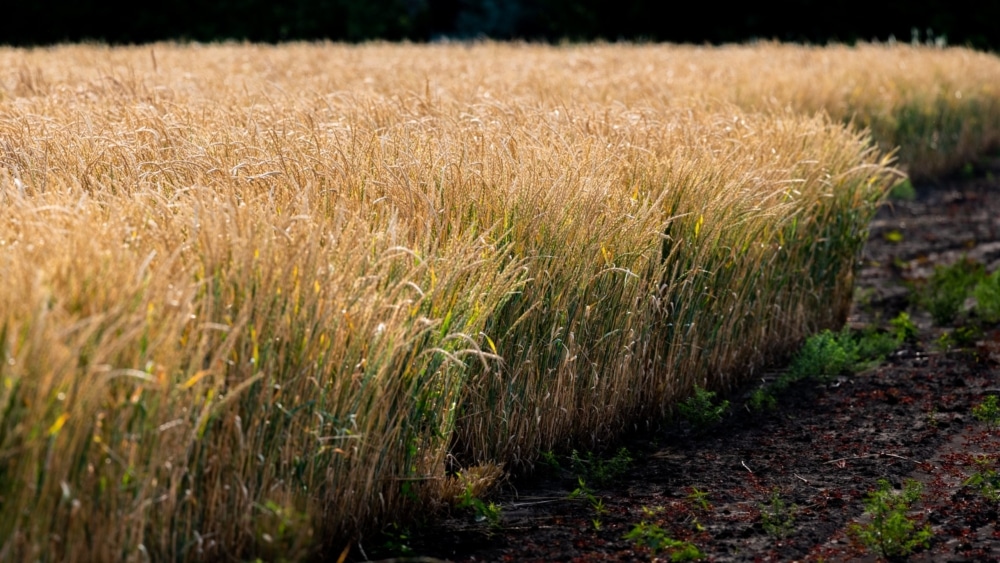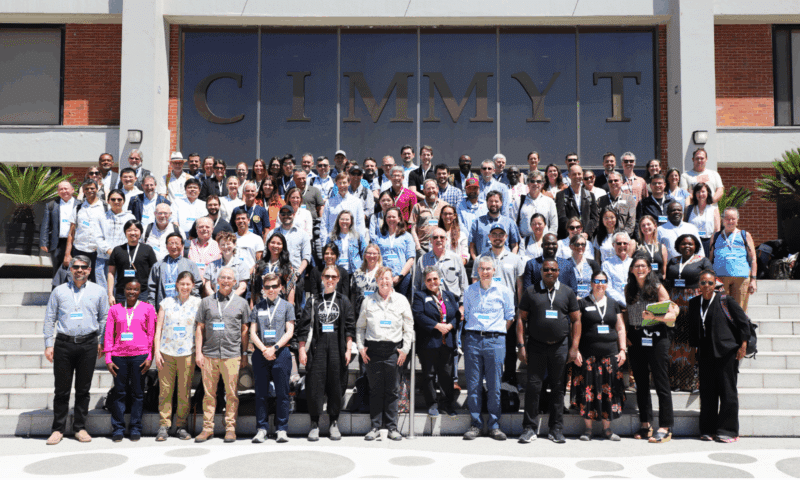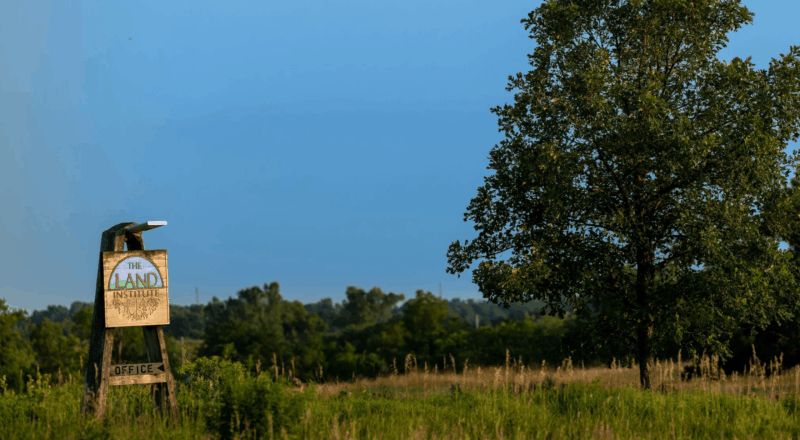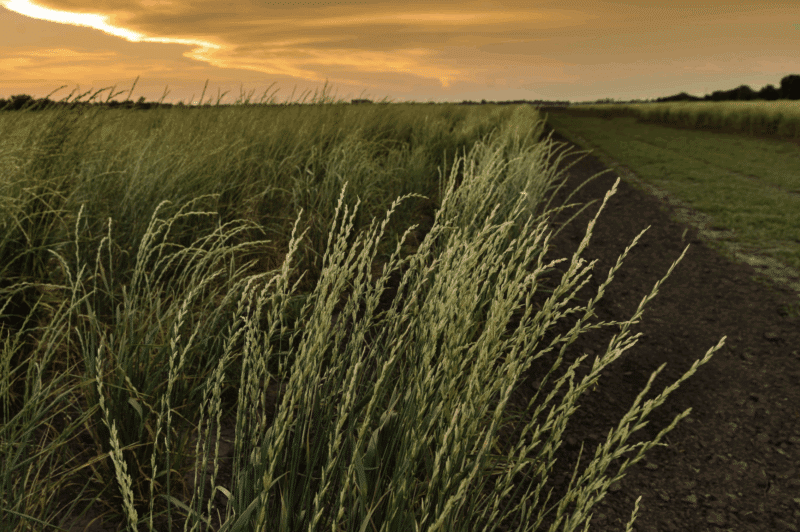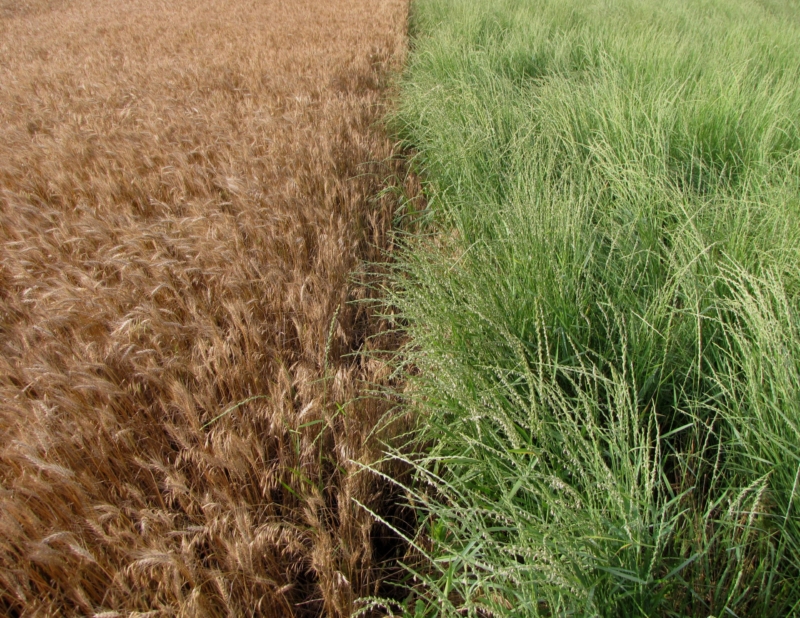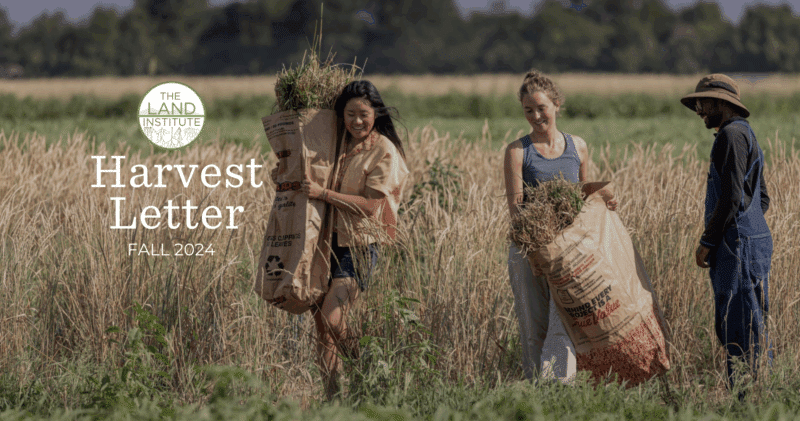Dear Friends,
It has been forty years since the first publication of Wes Jackson’s visionary and influential book New Roots for Agriculture. I recently pulled my copy of New Roots off the shelf and opened to page one, the preface, penned by Wes on April 12, 1980. The first sentence reads, “Most analyses of problems in agriculture do not deal with the problem of agriculture.” Wes goes on to explain how the economic and environmental woes of farming that capture society’s attention are almost always problems in agriculture. But what if problems in agriculture—nitrate leaching, soil erosion, farmer debt, loss of soil organic matter, herbicide resistance, over-production, pesticide poisonings, rural depopulation—are derivatives of agriculture itself? At least with the approach we have taken thus far.
In New Roots for Agriculture, Wes highlighted something many already knew—that the conspicuous plants that make up prairies, forests, savannahs, deserts, and other natural ecosystems are perennial, and generally, they consist of a bunch of different kinds of perennial species growing together. Reading further, Wes juxtaposed the ecosystem we came up with to grow our food with the natural ecosystems that built the soil on which we farm. Others had drawn attention to this contrast previously. In 1953, Columbia University professor J. Russel Smith wrote in his book Tree Crops, “Forest—field—plow—desert—that is the cycle of the hills under most plow agricultures…The merciless and unthinking way in which we tear up the earth suggests that our chief objective may be to make an end of it.” Smith argued that we need an agriculture based on trees, always perennials, if human society is going to endure over the long run.
The last two sentences of the preface in New Roots for Agriculture read, “I think that if we solve the problem of agriculture, we can solve most of the problems in agriculture. I think that mixed perennial seed crops can be developed over the next 50-100 years, and that they could be sufficiently compelling to be widely adopted.” In the first two decades following the publication of New Roots, dedicated staff and interns at The Land Institute researched this idea along with colleagues at colleges and universities and together began the work of developing a natural systems-inspired agriculture with the intention to solve the problem of agriculture.
Forty years after New Roots was published, we enjoy collaborations with over 50 research partners in fifteen countries working to develop new crops and ways to grow them in ecologically beneficial mixtures. Kernza® is being planted by farmers in the Midwest U.S. and Canada, and now in Europe. Perennial rice, developed by colleagues at Yunnan University in China, is growing on thousands of acres in the Yunnan Province, and test fields have been established in Vietnam, Myanmar, Laos, Cambodia, and Uganda.
The unwavering support from friends who believed in our work and gave generously over the years carried us through 40 of the 50-100 years Wes thought would be required. Little did we know when we started how important perennial crops could be in helping to address climate change by drawing down atmospheric CO2.
And yet, amidst all of this exciting progress—and it is exciting—we recognize that if we are to have any hope of seeing widespread adoption of mixed perennial seed crops on farmlands around the world in the next 60 years, the global effort to breed and design intercrops of perennial grains has to scale up substantially. More work is needed to accelerate the development of crops that are already in the pipeline such as silphium, sainfoin, perennial wheat, and sorghum, as well to breed altogether new perennial crops species. With a wider menu of perennial crops to work with, many more intercrop combinations adapted to specific local conditions will be possible.
In response to this recognition, The Land Institute is launching a new initiative called New Roots International (NRI). The initiative aims to formalize and expand The Land Institute’s network of international research partners and cooperating institutions, by initiating new collaborations and research hubs. It will support these hubs by building capacity through educational opportunities, infrastructure, and access to funding opportunities. Work at The Land Institute in perennial crop breeding, ecological intensification, ecosphere studies, and crop stewardship will continue with more intensity than ever before. We envision our work in Kansas and across the Midwest to be matched by similar efforts taking place in numerous locations around the world. Over the next six months, we will be describing the NRI initiative in greater detail as it begins to take root. We hope you follow the progress closely and continue to support The Land Institute as we intensify our core work in Salina, while extending our global reach to inspire and assist others. More evidence exists than ever before that we can tackle the problem of agriculture if enough people maintain their focus on the challenge at hand.
Perennially,
Tim Crews
Director of Research


